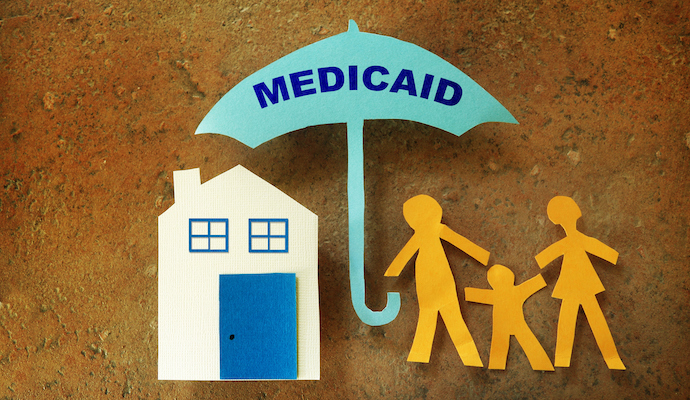Medicaid Cuts May Affect Children’s Long-term Health Outcomes
Medicaid cuts to address COVID-19 deficits could prove costly as childhood coverage leads to better financial, educational, and health outcomes.

Source: Getty Images
- Medicaid cuts to address revenue shortfalls and budget deficits from COVID-19 could result in adverse long-term effects for children, according to an expanding body of research reviewed by The Commonwealth Fund.
Medicaid covers nearly 39 percent of children nationwide. Cuts to address short term-budget windows would lead to not only immediate consequences for children and their families who rely on Medicaid such as decreased access to care and increased financial strain but also long-term effects that could negatively impact a child for the rest of their lives.
The Commonwealth Fund’s literature review revealed that Medicaid coverage of children and their mothers during pregnancy is associated with many long-term benefits that carry through to adulthood, including better health, reduced disability, greater educational attainment, and better financial outcomes.
The researchers found that Medicaid coverage of pregnant women benefits children from the moment they are born, resulting in higher birth weights both for that generation and the following one.
The study also revealed that each additional year of childhood Medicaid eligibility is associated with decreased mortality rates among young adults. Age groups born after Medicaid was established had lower mortality rates throughout childhood and into adulthood, with the strongest association in the oldest age group studied (ages 36 to 40).
For Black adolescents and young adults ages 15 to 23, additional years of Medicaid eligibility in childhood lowered mortality rates from internal causes such as cancer, nervous system diseases, and infectious diseases in particular.
According to the study, Medicaid coverage in early life is associated with decreased rates of chronic conditions such as obesity, diabetes, and heart disease in adults ages 19 to 36 as measured by an index of conditions. More years of Medicaid coverage also correlated with fewer emergency room visits, especially visits related to chronic diseases and visits for those living in low-income zip codes.
The study found that the benefits of Medicaid coverage during pregnancy and in early life improved health outcomes as well as educational attainment, financial security, and intergenerational economic mobility.
Children’s eligibility for Medicaid was linked to lower high school dropout rates, especially among people of color. Eligibility also increased the probability of completing high school in four years, particularly for White and Latinx children.
The researchers also noted that with every year a child was covered by Medicaid, the more likely they would be to enroll in college. It also increased the likelihood of obtaining a four-year college degree.
Medicaid is a federal-state financial partnership, which means that the federal government picks up a fixed share of state Medicaid costs. Therefore, when a state cuts $1 in funding from its Medicaid program, the actual federal and state Medicaid spending cut is considerably larger, ranging from $2.28 to $6.23, depending on the state.
In addition to further temporary boosts of federal Medicaid funding, the researchers suggest an automatic federal funding increase to prevent Medicaid budget cuts during future economic downturns.
“Cuts to Medicaid may be particularly shortsighted. They not only could harm children’s access to needed care in the short term and further exacerbate COVID-19-related state budget deficits, but they also could harm children’s long-term outcomes in the areas of health, disability, education, and financial security,” they stated.
Medicaid coverage of children and pregnant women produces considerable economic benefits for both individuals and society in general by improving intergenerational mobility, which, in turn, increases tax payments to help offset the prior investment in Medicaid coverage. Specifically, more than half of the cost of Medicaid coverage in childhood was offset by higher tax receipts in adulthood.
Women with more years of childhood Medicaid eligibility had higher wage income as young adults, especially those who remained eligible through their teenage years. Each additional year of childhood Medicaid eligibility was associated with an increase in women’s wages of $1,784, resulting in $533 additional tax payments.
